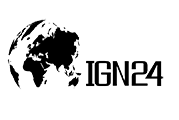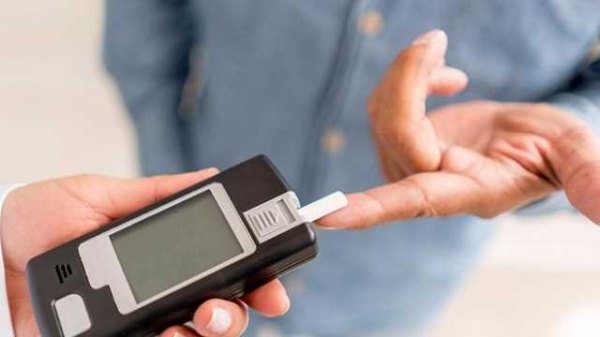Global biomarker in diabetes market was valued at US$ 321.65 billion in 2020 and is expected to reach US$ 782.01 billion by 2029, growing at a CAGR of 18.4% over the forecast period. Rising number of cardiovascular diseases and diabetes that is one of the growing concerns to affect the heart are responsible for 17.9 million deaths each year. Roche announced five new intended uses for key cardiac biomarkers to help identify cardiovascular risk, better diagnose patients and support early treatment.
Rising usage of Elecsys technology by End Users
Biomarkers such as Elecsys technology supports healthcare professionals in identifying which people with type-2 diabetes (463 million across the globe) are at higher risk of developing cardiovascular disease. Early identification of people at risk means cardioprotective treatment can be started sooner, which could prevent 68% of hospitalizations an also improve the mortality rate. The second newly-launched intended use for NT-proBNP provides healthcare professionals with a biomarker-based solution that identifies people at risk of developing Atrial Fibrillation (AF), an abnormal heart rhythm that can lead to stroke, brain damage and death. More than 40 million people suffer from Atrial Fibrillation (AF) globally. NT-proBNP, in combination with a single lead (or higher) electrocardiogram, can potentially help to diagnose Atrial Fibrillation (AF) so therapy can be started to reduce the stroke risk. This also means that effective drug treatment can be started early so that cardioprotective treatment can be optimized. Such a factor is expected to aid the overall market over the next eight years. The company is one of the biotechnology companies with truly differentiated medicines in oncology, immunology, infectious diseases, ophthalmology and diseases of the central nervous system amongst others. The company also specializes in diabetes management.
Request a sample Copy@
https://www.absolutemarketsinsights.com/request_sample.php?id=897
Asia Pacific region is anticipated to witness the highest growth over the forecast period
The HbA1c is currently not yet recommended as a diagnostic test for diabetes mellitus in the Philippines due to unavailability in many areas of the country and the lack of standardization of the test in our setting which is one of the restraining factors in the region. This increases the demand for the product and services and thus, the region is expected to witness the fastest growth over the forecast period. The prevalence of diabetes in Singapore is high. Screening to facilitate early detection and intervention has been shown to be cost-effective. Current clinical practice guidelines in Singapore recommends screening with fasting plasma glucose (FPG), followed by an oral glucose tolerance test (OGTT) in those with FPG 6.1-6.9 mmol/L. lycated haemoglobin A1c (HbA1c) has robust stability at ambient temperature, and can be performed on non-fasted capillary blood samples, making it an attractive potential alternative for screening. But, differential performance in different races, and its performance as a screening test has not been well characterized in Asian populations. In the Asia-Pacific region, Malaysia accepts the use of HbA1c, but at a lower cut-off of 6.3% or higher, while New Zealand uses a higher cut-off at 50 mmol/mol, or 6.7%. Such a factor is expected to aid the overall market over the next eight years.
Enquiry Before Buying@
https://www.absolutemarketsinsights.com/enquiry_before_buying.php?id=897
The Impact of Covid-19 on the Biomarker in Diabetes Market
It has been reported that COVID-19 can trigger either transient stress-induced state, or newly onset diabetes mellitus (DM). It is widely known fact that HbA1c serves as an indicator of glycemic status 12 weeks before the acute disease. High HbA1c in COVID-19 patients with no DM-history may serve as a marker of severe viral erythrocyte damage rather than a marker for the glucose control. Adults with COVID-19 are at greater risk of obtaining secondary respiratory infections, acute respiratory distress syndrome and mortality with an HbA1c of 6.5% or higher. The incidence of critically ill cases and mortality rate were significantly higher in the insufficient glycemic control group, and HbA1c was a significant independent risk factor associated with in-hospital death of patients with COVID-19. Such a factor is expected to aid the overall market over the next eight years.
Request for Customization@
https://www.absolutemarketsinsights.com/request_for_customization.php?id=897
Biomarker in Diabetes Market:
- By Type
- Prediabetes
- Type 2 diabetes
- Others
- By Biomarker Type
- Traditional Biomarkers
- Novel Biomarker
- Inflammatory Biomarker
- Others
- By End User
- Research Institutions
- Pharmaceutical Companies
- Biopharmaceutical Companies
- Hospitals
- Others
-
By Region
- North America
- U.S.
- Canada
- Mexico
- Rest of North America
- Europe
- France
- The UK
- Spain
- Germany
- Italy
- Nordic Countries
- Denmark
- Finland
- Iceland
- Sweden
- Norway
- Benelux Union
- Belgium
- The Netherlands
- Luxembourg
- Rest of Europe
- Asia Pacific
- China
- Japan
- India
- New Zealand
- Australia
- South Korea
- Southeast Asia
- Indonesia
- Thailand
- Malaysia
- Singapore
- Rest of Southeast Asia
- Rest of Asia Pacific
- Middle East & Africa
- Saudi Arabia
- UAE
- Egypt
- Kuwait
- South Africa
- Rest of Middle East & Africa
- Latin America
- Brazil
- Argentina
- Rest of Latin America
For More Information Click@ https://www.absolutemarketsinsights.com/reports/Biomarker-in-Diabetes-Market-2021---2029-897
Contact Us:
Company: Absolute Markets Insights
Email id: [email protected]
Phone: +91-740-024-2424
Contact Name: Shreyas Tanna
The Work Lab,Model Colony, Shivajinagar, Pune, MH, 411016
Website: https://www.absolutemarketsinsights.com/

